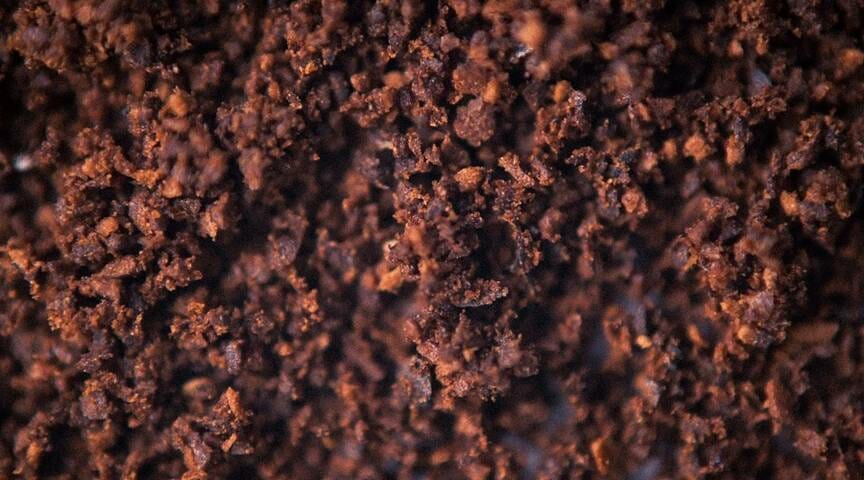Old coffee is widely used as fertilizer for plant growth. But, a number of people are concerned about its uses since coffee is highly acidic.
Many homeowners want to know – will coffee grounds kill grass? Its answer is complicated. Coffee grounds usually don’t harm grass. Instead, they are beneficial for better grass growth.
This article will clarify whether you should use coffee grounds as a lawn grass fertilizer. Besides, we will cover other relevant topics.
Keep reading to learn more.
The Answer Is Here
The answer is no; coffee grounds will not kill the grass. Instead, used coffee is an excellent lawn fertilizer.
Coffee grounds contain nitrogen, an essential nutrient for healthy grass growth. Nitrogen is a key ingredient in many commercial fertilizers and helps promote green, lush growth.
They also provide other nutrients that grass needs, including potassium and phosphorus. Moreover, coffee grounds can help improve soil drainage and aeration.
Coffee grounds are a great option for a natural way to fertilize your lawn grass.
Can I Sprinkle Used Coffee Grounds on My Lawn?

Yes, you can sprinkle used coffee grounds on your lawn, which will not harm the grass. Coffee grounds contain essential components that are beneficial for grass on your lawn.
If you have a lot of coffee grounds, you can mix them with other organic materials, such as leaves or compost, and use them as mulch. They help keep the soil moist and help prevent weeds from growing.
Is Coffee Good for Your Grass?
Coffee grounds are not only a natural source of nitrogen. They also help to aerate the soil and keep the moisture.
Additionally, coffee grounds are excellent for earthworms. They assist in creating a healthy environment for the worms, which helps to aerate the soil and improve drainage.
To boost your lawn grass, consider using coffee grounds for a better result.
Why Use Coffee on Lawn Grass?
You can use coffee grounds as a lawn fertilizer for several reasons. They add organic material to the soil to improve drainage, water retention, and aeration in the soil.
Besides, coffee grounds attract earthworms, which help aerate and improve the quality of the soil.
However, you must be careful about the dose. Remember that too much coffee can harm the grass when using coffee grounds as a lawn fertilizer. Therefore, apply coffee grounds to the lawn in moderation.
How to Apply Coffee Grounds to the Lawn?

After hearing its benefits, you might be interested in applying coffee grounds to your lawn grass. Here is the step-by-step guide to doing it properly.
Step 1: Collect the used coffee grounds from your morning brew. You can also contact your local café to collect a large amount of used coffee grounds.
Step 2: Spread the coffee grounds evenly over your lawn.
Step 3: Water the coffee grounds into the lawn thoroughly.
Step 4: You will see a lush green lawn after a few days.
How Often Can I Put Coffee Grounds on My Grass?
You can apply coffee grounds on grass once a month. Some people also use it once every two months. The frequency will depend on the condition of your lawn and how you want it to look.
You can also use used coffee grounds as mulch around your plants. It will help keep the weeds down and add nutrients to the soil.
Can Coffee Grounds Harm Plants?
It might be a common question, but its answer is complicated. The simple answer is that coffee grounds can harm plants that cannot tolerate acidity. On the other hand, coffee grounds don’t harm acid-loving plants.
So, if you are wondering whether coffee grounds are harmful to your plants, it depends on the plant type. You can ask your local gardening expert for an accurate answer to this question.
Which Plants Do Not Like Coffee Grounds?
Some plants, like geraniums, asparagus ferns, Chinese mustard, and Italian ryegrass, do not prefer coffee grounds as a fertilizer. However, other plants may benefit from the extra nutrients from coffee grounds. If you want to know in-depth whether your plant would like coffee grounds, you should consult a gardening expert.
Do Coffee Grounds Deter Insects?
Coffee grounds are a natural and effective repellent to deter insects from your lawn. Studies have shown that coffee grounds can repel ants, cockroaches, slugs, and snails.
They contain caffeine, which is a natural insecticide. When you apply coffee grounds to the soil, the caffeine in coffee grounds will kill existing insects and discourage new ones from coming.
To use coffee grounds as an insect repellent, sprinkle them around the boundary of your lawn and garden. You can also add coffee grounds to your compost pile to help deter pests.
Coffee grounds are safe for children and pets. So, you don’t have to worry about harming your family or animals.
Do Fresh Coffee Grounds Kill Grass?
In some cases, fresh coffee grounds can be harmful to grass. But, it generally happens when you use too many coffee grounds or apply them too frequently.
In small doses, coffee grounds are quite beneficial for grass, providing a gentle source of nutrients and helping retain moisture in the soil.
Yes nitrogen just don’t use too much or it can burn the roots
— Jenn Strout | MotivateUTech (@StroutMotivateU) January 16, 2022
So, you should use them carefully and avoid using them more than once or twice a month. Overdoing it can lead to burned grass and an unhealthy lawn.
Final Thoughts
Let’s go to the beginning. Will coffee grounds kill grass? Though it depends on usage and dose, the answer is no in general. Coffee can be beneficial for better grass growth on your lawn. It is a fantastic natural fertilizer that usually doesn’t harm plants.
The only thing you have to keep in your mind is an overdose of coffee grounds can burn the grass. So, you should use it in moderation to ensure healthy grass growth.
You can sprinkle coffee grounds on grass once a month. It should improve the health and appearance of your lawn. However, if you need a professional suggestion, meet a gardening expert for a better opinion.
References:
https://www.gardeningknowhow.com/lawn-care/lgen/coffee-grounds-lawn-fertilizer.htm
https://homeguides.sfgate.com/grow-grass-coffee-grounds-36205.html